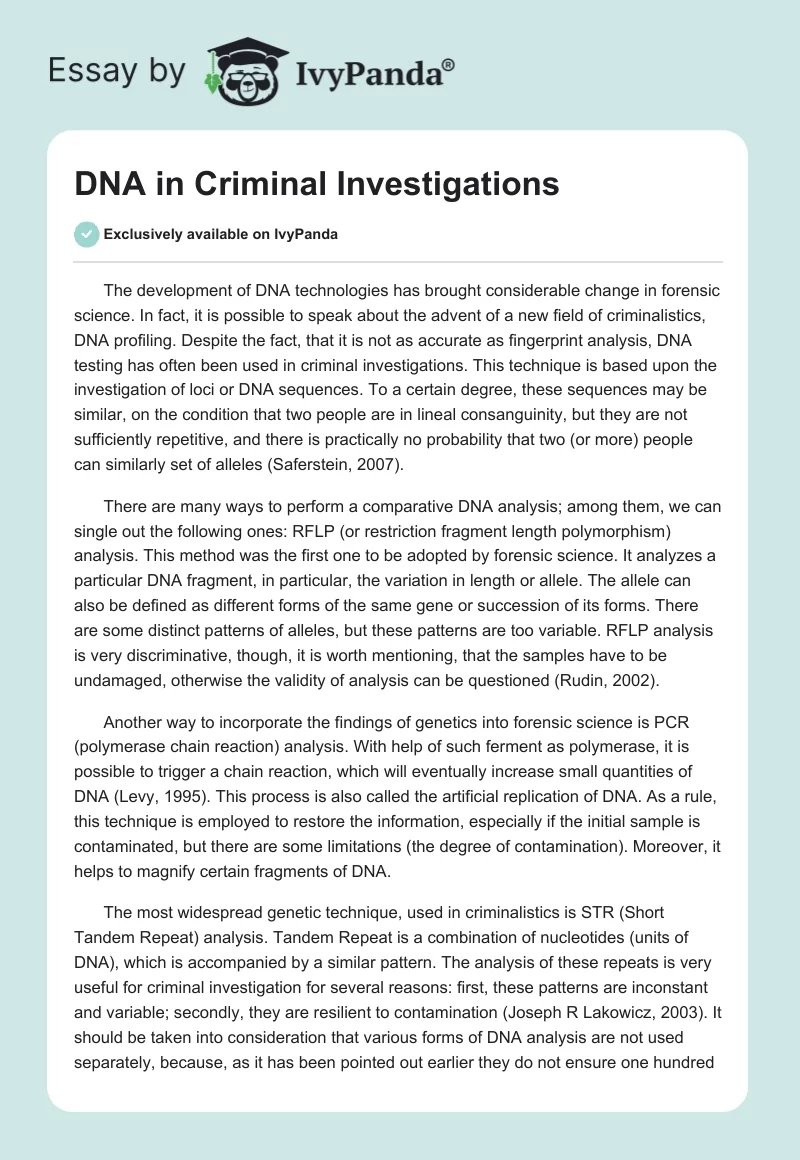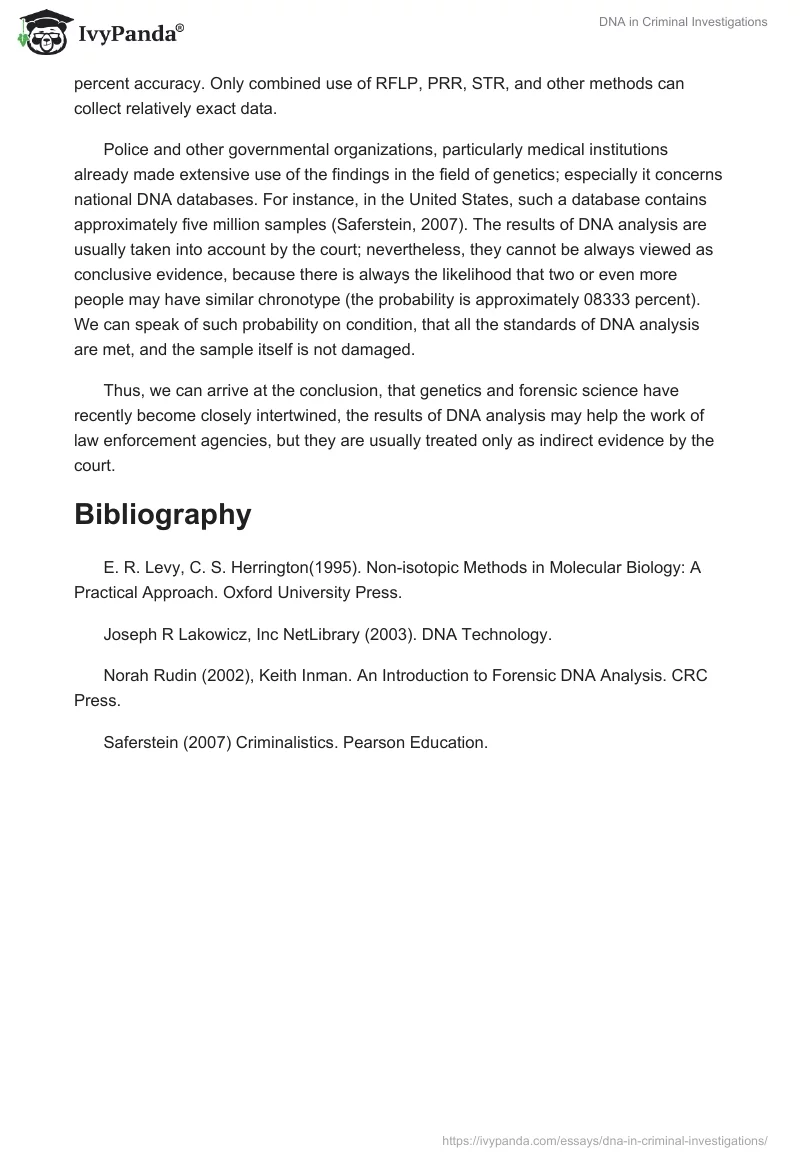The development of DNA technologies has brought considerable change in forensic science. In fact, it is possible to speak about the advent of a new field of criminalistics, DNA profiling. Despite the fact, that it is not as accurate as fingerprint analysis, DNA testing has often been used in criminal investigations. This technique is based upon the investigation of loci or DNA sequences. To a certain degree, these sequences may be similar, on the condition that two people are in lineal consanguinity, but they are not sufficiently repetitive, and there is practically no probability that two (or more) people can similarly set of alleles (Saferstein, 2007).
There are many ways to perform a comparative DNA analysis; among them, we can single out the following ones: RFLP (or restriction fragment length polymorphism) analysis. This method was the first one to be adopted by forensic science. It analyzes a particular DNA fragment, in particular, the variation in length or allele. The allele can also be defined as different forms of the same gene or succession of its forms. There are some distinct patterns of alleles, but these patterns are too variable. RFLP analysis is very discriminative, though, it is worth mentioning, that the samples have to be undamaged, otherwise the validity of analysis can be questioned (Rudin, 2002).
Another way to incorporate the findings of genetics into forensic science is PCR (polymerase chain reaction) analysis. With help of such ferment as polymerase, it is possible to trigger a chain reaction, which will eventually increase small quantities of DNA (Levy, 1995). This process is also called the artificial replication of DNA. As a rule, this technique is employed to restore the information, especially if the initial sample is contaminated, but there are some limitations (the degree of contamination). Moreover, it helps to magnify certain fragments of DNA.
The most widespread genetic technique, used in criminalistics is STR (Short Tandem Repeat) analysis. Tandem Repeat is a combination of nucleotides (units of DNA), which is accompanied by a similar pattern. The analysis of these repeats is very useful for criminal investigation for several reasons: first, these patterns are inconstant and variable; secondly, they are resilient to contamination (Joseph R Lakowicz, 2003). It should be taken into consideration that various forms of DNA analysis are not used separately, because, as it has been pointed out earlier they do not ensure one hundred percent accuracy. Only combined use of RFLP, PRR, STR, and other methods can collect relatively exact data.
Police and other governmental organizations, particularly medical institutions already made extensive use of the findings in the field of genetics; especially it concerns national DNA databases. For instance, in the United States, such a database contains approximately five million samples (Saferstein, 2007). The results of DNA analysis are usually taken into account by the court; nevertheless, they cannot be always viewed as conclusive evidence, because there is always the likelihood that two or even more people may have similar chronotype (the probability is approximately 08333 percent). We can speak of such probability on condition, that all the standards of DNA analysis are met, and the sample itself is not damaged.
Thus, we can arrive at the conclusion, that genetics and forensic science have recently become closely intertwined, the results of DNA analysis may help the work of law enforcement agencies, but they are usually treated only as indirect evidence by the court.
Bibliography
E. R. Levy, C. S. Herrington(1995). Non-isotopic Methods in Molecular Biology: A Practical Approach. Oxford University Press.
Joseph R Lakowicz, Inc NetLibrary (2003). DNA Technology.
Norah Rudin (2002), Keith Inman. An Introduction to Forensic DNA Analysis. CRC Press.
Saferstein (2007) Criminalistics. Pearson Education.


